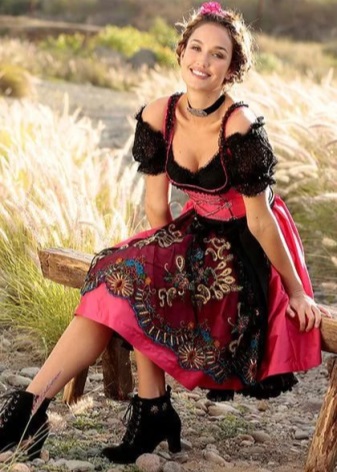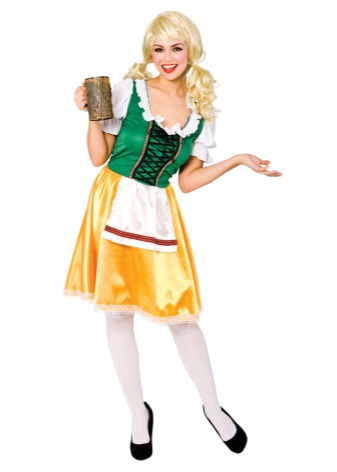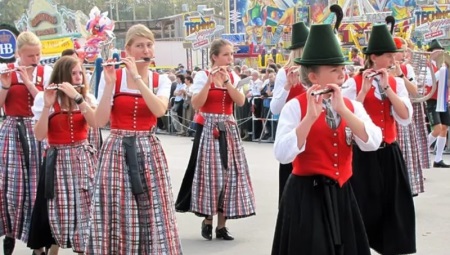The Bavarian national costume is an integral part of the usual way of life for the residents of Bavaria, as it is worn not only for the holidays, but also often tried on “every day”. All residents of this free state, which is located in the southern part of Germany, reverently revere the traditions of their people.
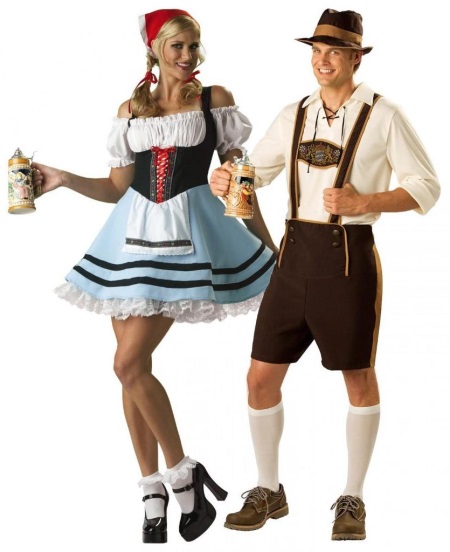
History
The national clothing of Bavaria appeared at the beginning of our era. At that time, she looked simple and unassuming. Men wore loose-fitting pants and shirts, sewn only on their sleeves. The shoes were also notable for simplicity, since in the manufacture of their tailoring only a piece of leather intended to cover the foot and belts for fastening to the foot were used.
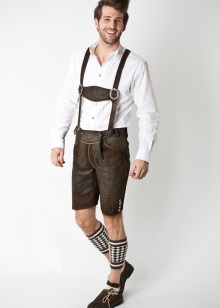
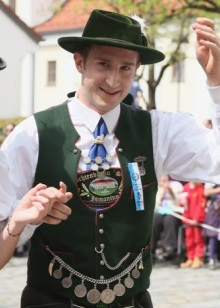

The fair sex wore dresses to the floor, sewn from only two pieces of material. Over time, there have been changes in women's clothing - attractive dresses with a deep neckline and sleeves have appeared. And as outerwear were used raincoats in the floor with hoods.
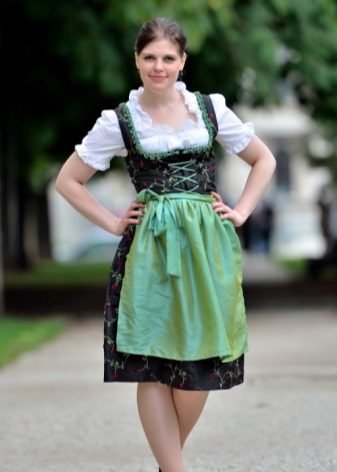
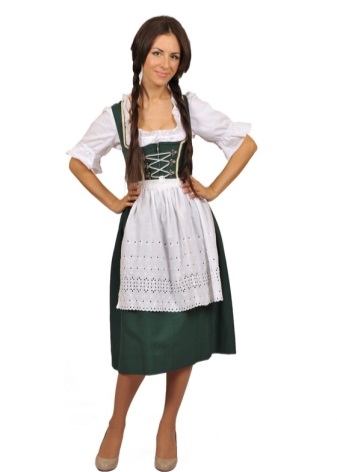
These ordinary dresses became the basis for the creation of the national Bavarian costume. Ordinary people were forbidden to use decorative elements to decorate clothes. This privilege was enjoyed only by the upper strata of the population.
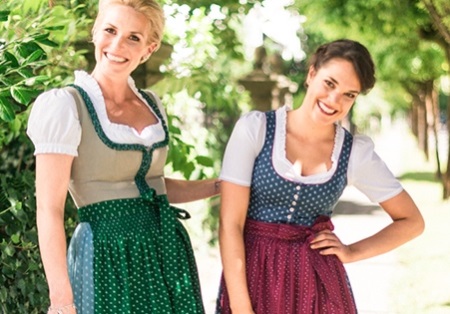
Another difference between the rich and the poor was the fabric. Peasant costumes were made of expensive materials, while city dwellers could not afford such luxury.
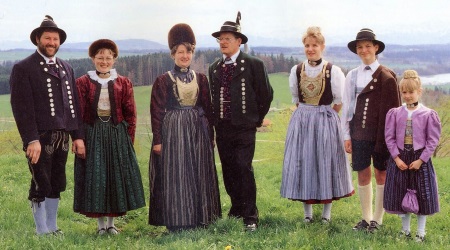
Features
Each national costume has a number of features that have developed in the process of development of the people. Bavarian outfit is no exception to the rule.In ancient times, only alongside could one learn a lot about a person - a profession, age, status, etc.
Modern costumes also tell a lot about its owner. For example, you can determine marital status and even the number of children.
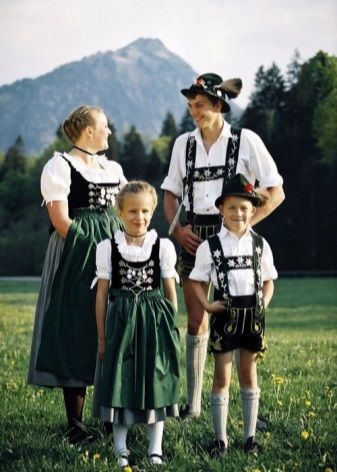
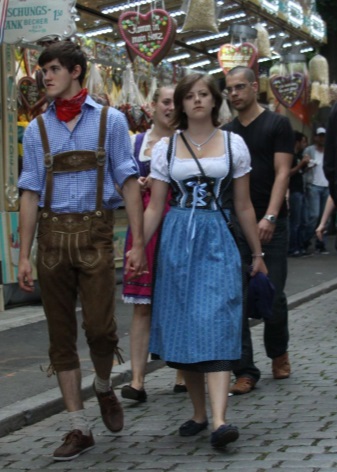
For the Bavarians, the national costume is mundane and familiar. They wear it every day, which gives the inhabitants of Bavaria originality and originality. This clothing has the rules and traditions of socks, which appeared during the development of the people.
According to the national costume, you can also guess belonging to a specific region of Bavaria. They differ in embroidery, colors and decoration.
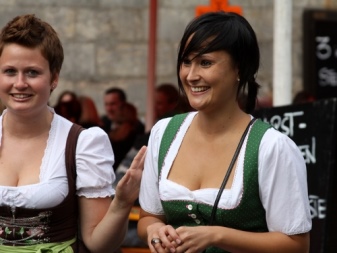

Models
The national women's outfit is called dirndl. It attracts attention with its brightness and effect. It includes several basic elements of clothing:
- The blouse is usually white with narrow or lush sleeves. For decor, lace or bows are used.
- Vest, corset or fitted lace-up bodice.
- A luxurious, fluffy skirt that is very similar to those worn during the Renaissance.
- Apron. Bright colors give the image of sophistication and elegance.

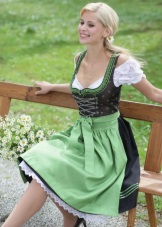
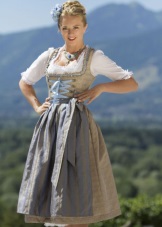
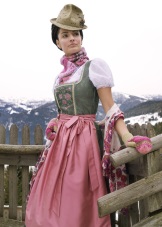
Bavarian national clothing for men is called Trachten (tracht). Its main difference is leather pants, complemented by suspenders or presented on a wide belt. An indispensable attribute of the Bavarian are leggings and massive shoes. The top of the suit is represented by a shirt, vest and frock coat.
For the Bavarian, the availability of accessories plays a huge role. They often decorate the national costume with chains, clasps, key chains and other decorative elements.
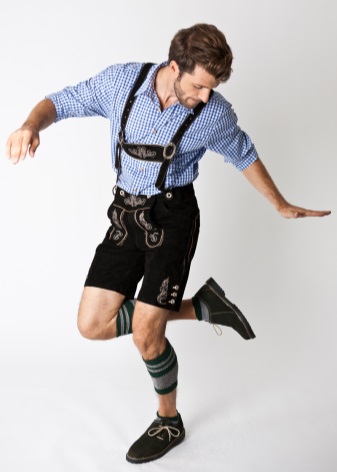
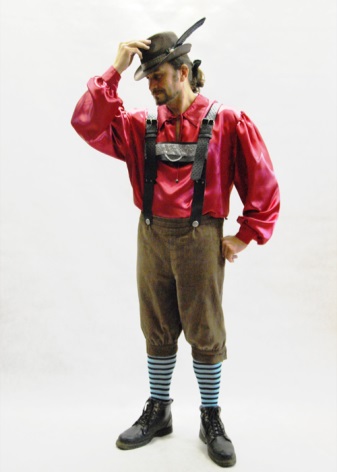
The highlight is the headpiece, as it is decorated with brushes, feathers and other stylish elements.
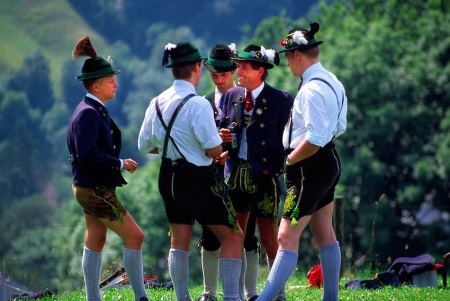
Color schemes
Girls are very fond of wearing national clothes, as it is represented by bright and rich color schemes. Very often, the basic colors are green, blue, red and blue, as well as their many shades. Dirndli are often presented in white and blue tones that match the colors of the Bavarian flag.

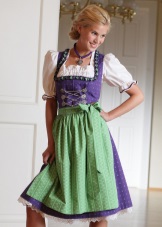
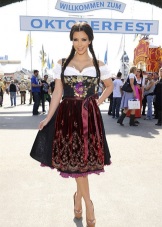
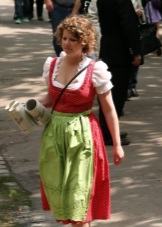
Today, the national costume of Bavaria is very different from the original version. It looks bright and catchy thanks to the presence of a large number of ribbons, spectacular embroideries and ornaments. A snow-white blouse sets the tone for all clothes.
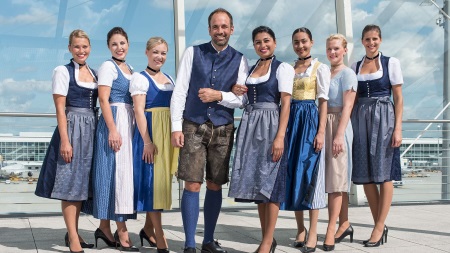
Women's suits are represented by a much wider range of colors compared to men's. Bright skirts, aprons and vests allow you to create spectacular bows. Men often focus on headgear. It can be blue, cherry, green.
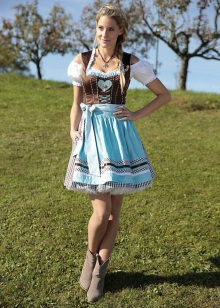
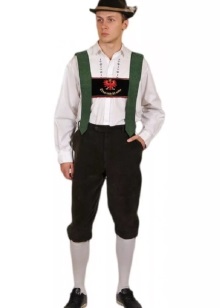
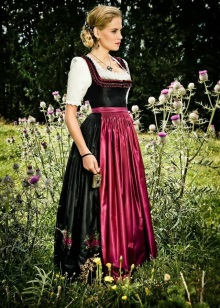
Materials
Bavarians have always carefully approached the choice of fabric for sewing a national costume. They preferred natural materials. Often used linen, wool, leather and loden. Modern fabrics often include synthetic fibers, but this does not harm in any way, but, on the contrary, gives clothes strength, elasticity, brightness, etc.

Designers create stunning models, because they are not afraid to experiment with fabrics, as well as using a variety of cuts. A wide range of women's blouses, sundresses, dresses is simply mesmerizing. Each model is original and unique.
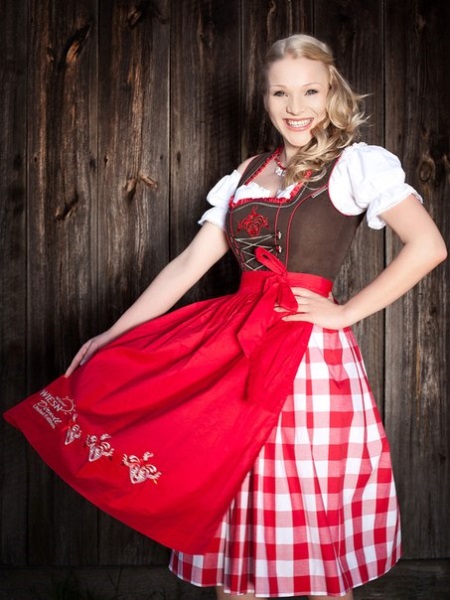
Accessories
A very important female accessory is an apron. It perfectly decorates the stylish image, as it is represented by bright color schemes, as well as a diverse cut. He can tell a lot about the girl.
For example, from how a bow is tied, you can find out about the marital status of its owner. Single girls tie a bow to the left. The presence of a bow on the right indicates that the woman is married. Sometimes he meets a bow in the middle, then this indicates that the woman was widowed.
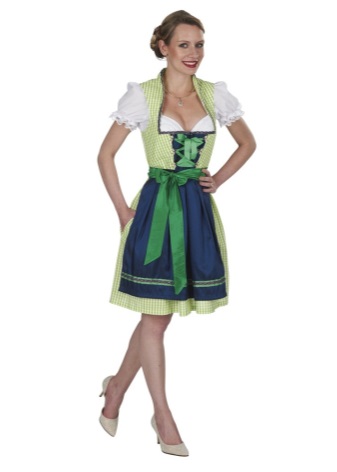
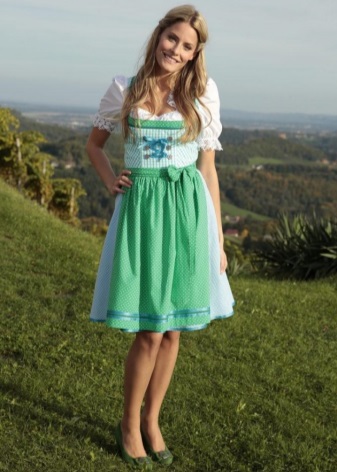
Women like to look bright and attractive, therefore they often complement national clothes with beautiful scarves, beads and other jewelry.
Men pay great attention to a headdress.If you choose the right hat with taste, it can completely change the image, add colors, a sense of style, elegance, and also show your personality.
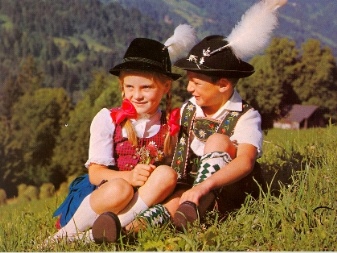
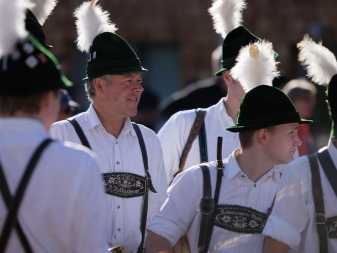
Footwear
An obligatory component of the national costume is shoes. Women wear smart shoes, complemented by buckles. Representatives of the stronger sex wear massive boots, made on a thick sole.
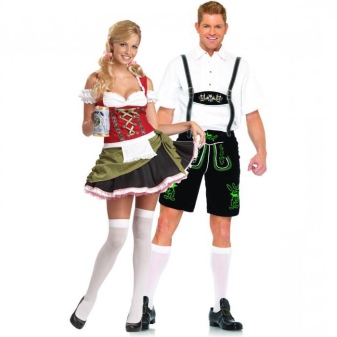

Modern bow
Designers create stunning models of Bavarian national clothes, because they like to play with color schemes, cuts, styles, materials.
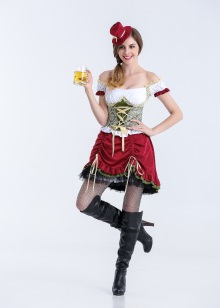
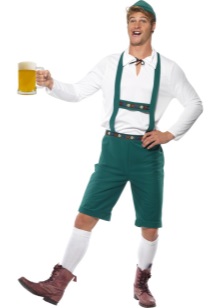
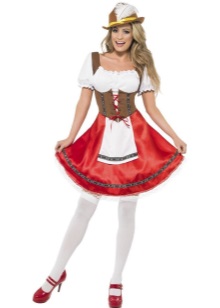
Bavaria's modern national outfit for the fair sex looks very elegant and sexy. It consists of a fluffy mini-length skirt of red color, a snow-white blouse with magnificent sleeves, an exquisite corset and a small apron. A sophisticated feather hat will add to the bow a charm and originality. In this outfit, you can safely go to the party.
